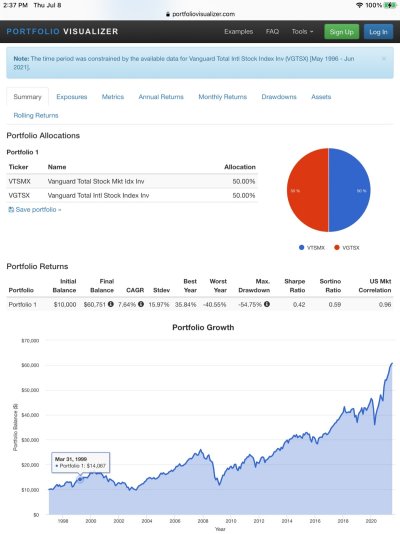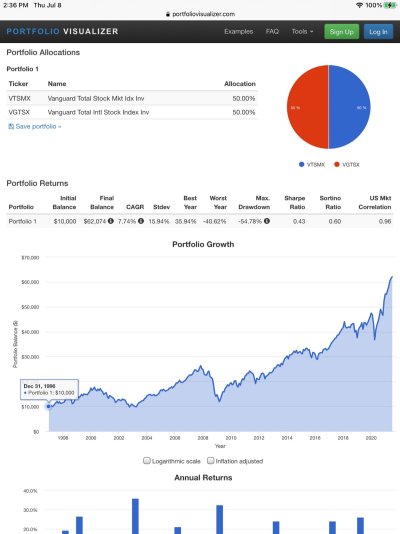There are lots of options for investing. I am with you on the simple. being kind of a set and forget it type i just select a low fee mutual fund or 2 and leave it alone. I maybe log onto my Vanguard account every 2-3 months. I dont have or want a tv but i do listen to the top of hour news on radio and they usually tell how the DOW S&P and NASDAC is doing for the day. sometimes it is up sometimes down so if the DOW and SP are up or down then so is my fund so no need for me to log on every or even every month. Out of curiosity I just logged onto my Vanguard and looked at my VBIAX and year to date it has been about 9.23% since mine is all in taxable ,I have to figure about 2% less. I also have some $$ in Vanguard wellington as well (about 2K and it runs about 11% so far this year, but most of mine $$ is in VBIAX and it will do the heavy lifting. My 21 yr old daughter just set up a fidelity roth 100% in FZROZ and she plans to stick with it for a very long time and maybe add a total bond fund in 20 years or so. She young enough to take a bull market when it happens and still recover when the next bear comes around.
Last edited:


